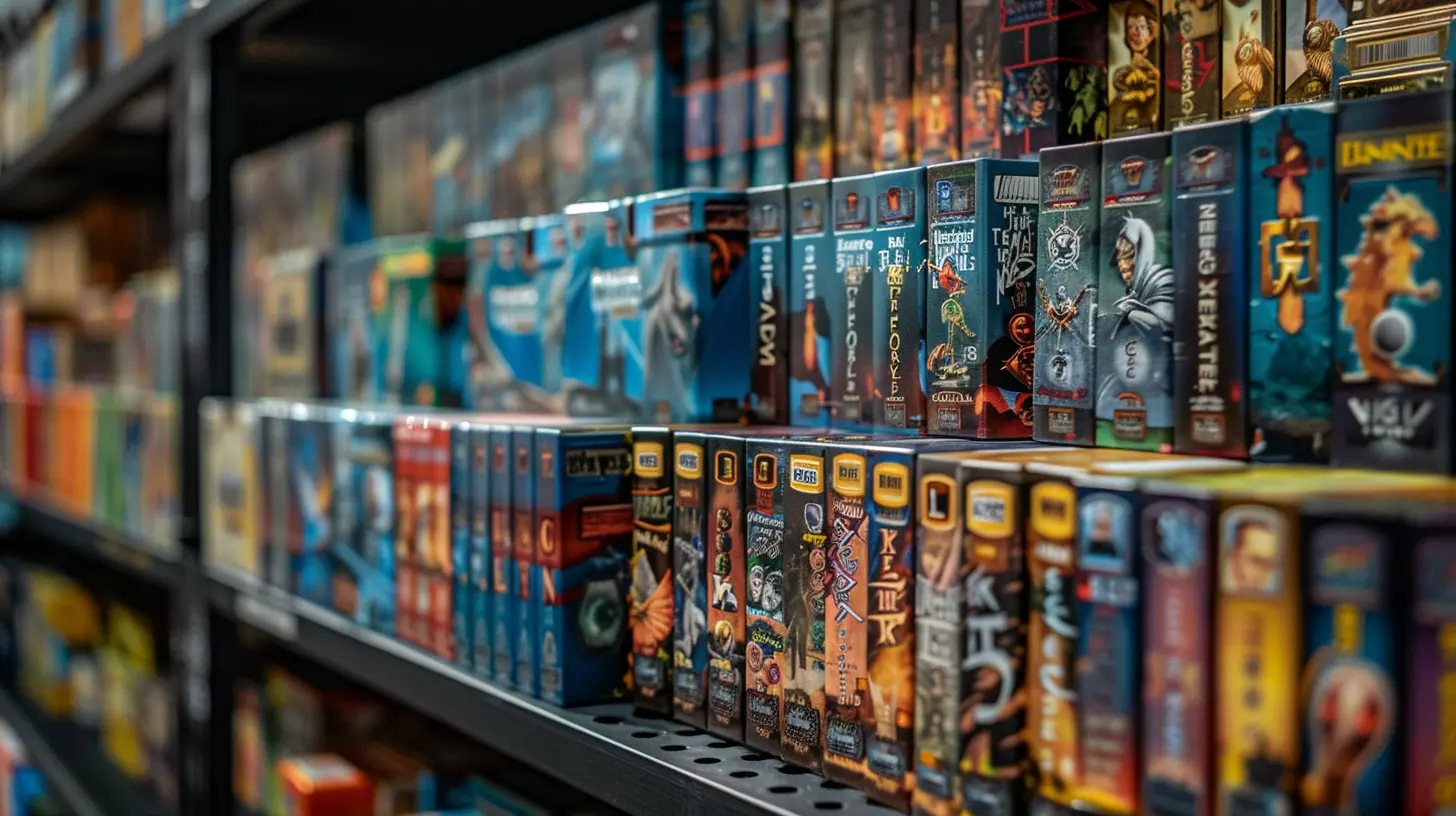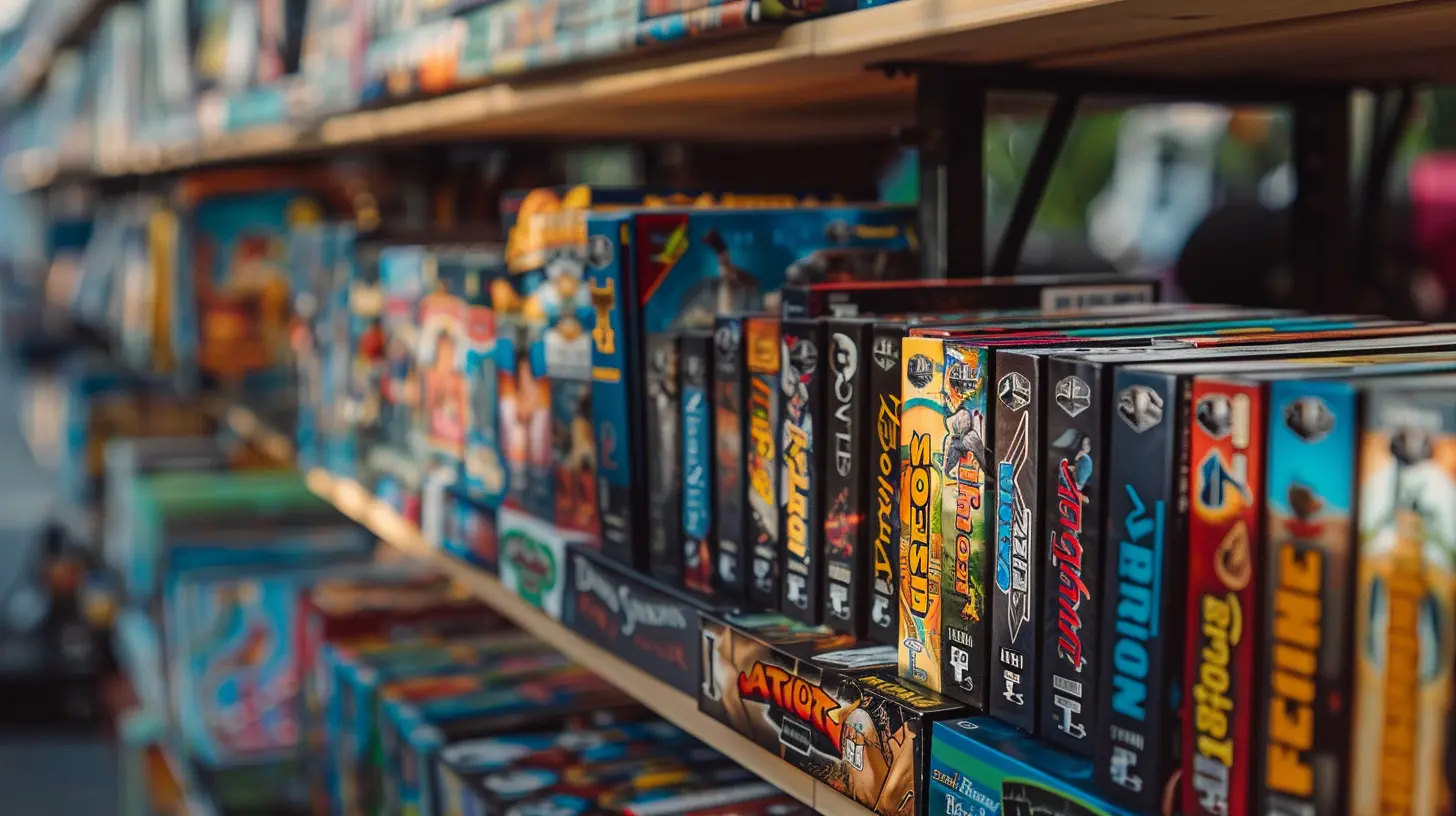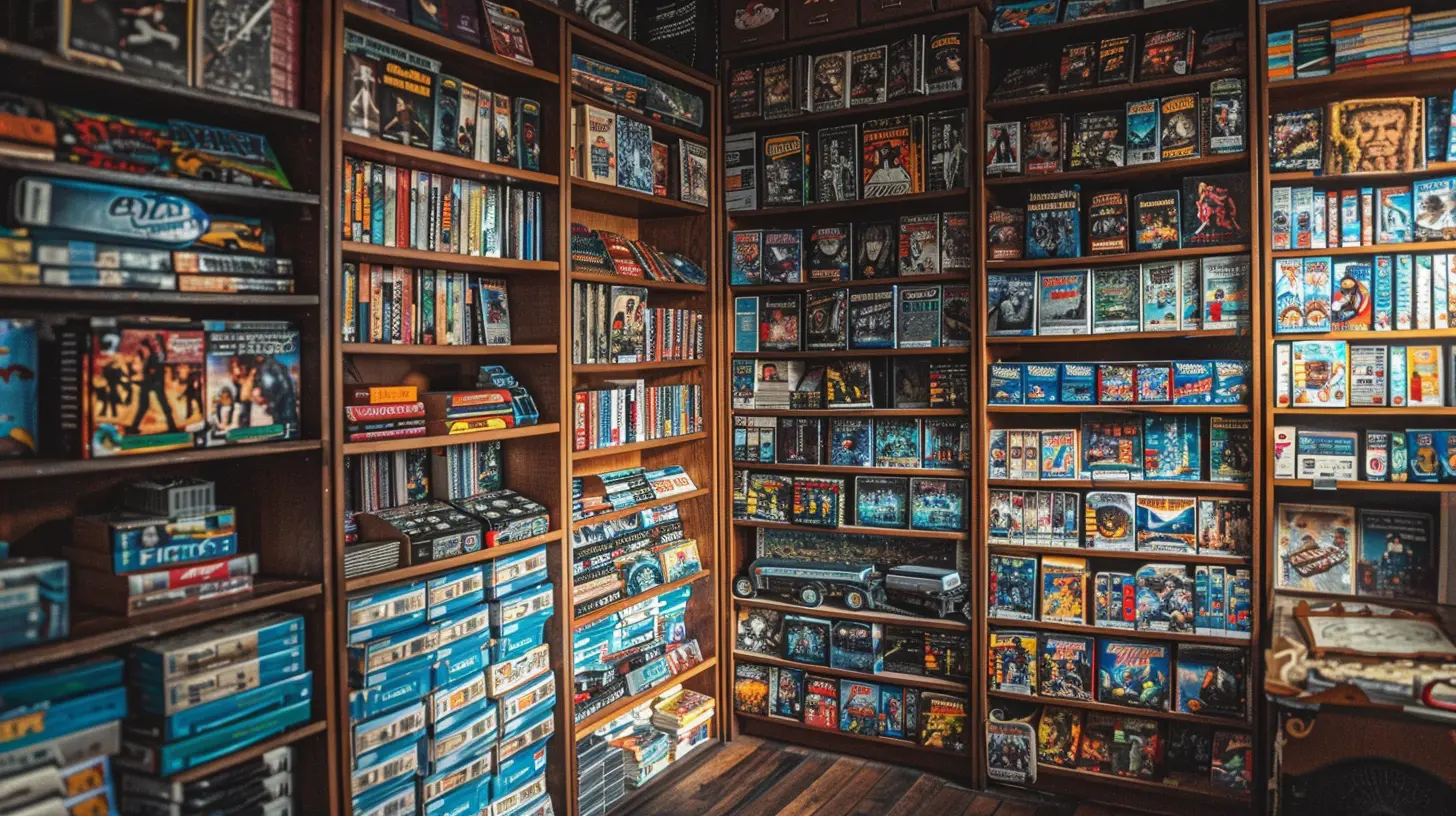Understanding Game Grading and What It Means for Collectors
28 October 2025
Have you ever stumbled across an old video game in your attic and thought, “This might be worth something”? Or maybe you’ve watched auctions where vintage games go for thousands of dollars and wondered what makes them so special? Well, you're not alone. As retro gaming becomes more popular, game grading has stepped into the spotlight — and it's changing how we look at our favorite old-school titles.
In this guide, we're diving deep into the world of game grading — what it is, why it matters, and how it can affect your collection. Whether you're a seasoned collector or just starting your journey, buckle up! You're about to unlock a whole new level of understanding in the collecting game.
What Is Game Grading Anyway?
Let’s keep it simple. Game grading is a process where a video game is evaluated, authenticated, and assigned a grade based on its condition, rarity, and packaging. Think of it like sending your game to school — and it comes back with a report card.Professional grading companies like WATA and VGA (Video Game Authority) use a standardized scale to assess sealed and sometimes unsealed games. They inspect everything — from box art to shrink wrap, from manuals to tiny corner dings. Once they’re done, the game is sealed in a protective case with a grade label.
Cool, right? But there's more to it than just slapping a number on a game.
Why Do Collectors Care About Game Grading?
You might be thinking, “Why do I need someone to grade my game? I know what I’ve got!” True, but here's the thing — game grading adds trust, value, and legitimacy to your collection. It’s the difference between selling a diamond in the rough and a gem certified by a jeweler.Graded games:
- Hold more value – especially if they’re rare, sealed, or in mint condition.
- Are protected – the casing shields them from wear, dust, and accidental damage.
- Are trusted – when you buy or sell a graded game, that third-party grade speaks volumes.
In the collector world, reputation matters. And grading? It’s like having a golden seal of approval on your treasure.
The Grading Process: Breaking It Down
So, how does this all work? Here's a quick walk-through of the typical grading process:1. You Choose a Grading Company
Two big players dominate the space:- WATA Games – Known for its detailed grading scale and partnerships with Heritage Auctions.
- VGA (Video Game Authority) – Long-standing reputation and clear plastic cases.
Each has its own criteria, timelines, and costs — so do your homework before submitting.
2. You Submit Your Game
You'll fill out paperwork, package your game securely, and ship it off to the grading company. Be patient — there may be a wait depending on demand.3. They Grade It
Experts assess:- Seals and shrink wrap – Is it tampered with or fully intact?
- Box condition – Any dents, scratches, or faded artwork?
- Manuals and inserts – Are they present and crisp?
- Game cartridge/disc – Is it mint or visibly used?
4. The Game Gets a Grade
Grades are typically on a 10-point scale (WATA uses a combination like 9.4 A+), with higher numbers meaning better condition:- 10 – Pristine, untouched condition
- 9.8/9.6 – Near mint, almost perfect
- 9.4 and below – Slight imperfections or wear
The letter grades (A+, A, B) refer to the seal condition.
5. Your Game Comes Back Encased
It’s returned to you in a tamper-proof, display-ready case — shiny, official, and ready to show off.
Understanding the Grading Scale
Let’s decode these grades a little more. If you’re buying or selling, you’ll want to know exactly what these numbers and letters actually mean.| Grade | Description |
|-------|-------------|
| 10 | Museum-level perfection — unbelievably rare |
| 9.8 | Mint condition with very minor flaws (if any) |
| 9.6 | Near mint with tiny imperfections |
| 9.4 | Excellent, but may have minor wear |
| 9.2 and below | Increasing levels of visible wear or age |
Pair this with seal condition (A++, A+, A, B, etc.), and that’s your full grade.
So, a WATA 9.8 A+? That’s solid gold for collectors!
What Makes a Game Worth Grading?
Not every game is worth the grading fee. So, when should you consider having one graded?1. It’s Factory-Sealed
A sealed game straight from the shelf is like finding a unicorn — especially from the ‘80s or ‘90s. A factory seal can easily boost your game’s value by hundreds (or even thousands).2. It’s Rare or Hard to Find
Limited releases, demo versions, or canceled games often fetch big bucks. Think Nintendo World Championship cartridges or early Pokémon versions.3. It’s in Exceptional Condition
Even if it’s unsealed, games that have been kept in pristine condition might still be grading-worthy, especially older titles.4. You’re Planning to Sell It
Grading gives buyers confidence. It tells them exactly what they’re getting. That peace of mind? Priceless (and often pushes up the sale price, too).The Impact on the Collectible Market
Game grading has completely changed the collecting scene. Here's how:Prices Have Skyrocketed
Graded games have sold for jaw-dropping amounts. Remember when a sealed copy of Super Mario Bros. went for over $2 million? Insane — but it’s the power of grading.More Casual Gamers Are Becoming Collectors
Grading has made collecting more accessible. It’s no longer just about nostalgia — now, it’s part hobby, part investment.It’s Created a New Economy
Grading has led to auctions, insurance policies, and even display cases being designed just for video games. The ripple effect is real.Tips for New Collectors
Just getting started? Here are a few tips to kick off your grading journey:Start Small
You don’t need to grab rare titles right off the bat. Look for affordable sealed games from the 2000s. They’re still collectible and easier on the wallet.Do Your Homework
Check recent auctions, track marketplace prices, and learn about game variations (like Player’s Choice or Greatest Hits editions — they matter!).Store Your Games Properly
If you're not ready to grade, at least store your games like a pro. Away from heat, moisture, and sunlight is the way to go.Be Patient
Grading isn’t always fast. Depending on demand, it might take weeks (or months). But trust me — the results are usually worth the wait.Is Game Grading Right for You?
That’s the million-dollar question, right? Game grading isn’t for everyone — and that’s okay. If you collect for the love of the game, there’s zero pressure to get your titles encased and archived.But if you’re looking to build a valuable collection, preserve your games for the long haul, or maybe even sell one day, grading can be a game-changer.
Just like you wouldn’t sell a classic car without appraising it, the same goes for your gaming gems.
In the End, It's About Passion
Whether you're a nostalgic gamer hanging on to your childhood favorites or a savvy investor looking for the next Holy Grail, collecting games is a personal, passionate journey.Game grading adds structure, value, and a little bit of glamour to that experience. It’s like giving your favorite games the VIP treatment they truly deserve.
So go ahead, dig out those old boxes, check those attic shelves, and rediscover the treasures you might be sitting on. Who knows? That dusty Zelda cartridge or forgotten Resident Evil might just be your ticket into the world of graded game collecting.
And remember — every collector starts with a single game.
all images in this post were generated using AI tools
Category:
Game CollectingAuthor:

Leif Coleman
Discussion
rate this article
1 comments
Logan McMahon
Game grading: where your childhood treasures get a fancy report card! Remember, a '9.8' means you’re one step closer to impressing your friends—and one step farther from actually playing those games!" 🎮😂
November 2, 2025 at 4:55 AM

Leif Coleman
Absolutely! Game grading turns nostalgia into a collectible score, balancing value and playability—just remember, it's all about appreciating the love for the games! 🎮✨


